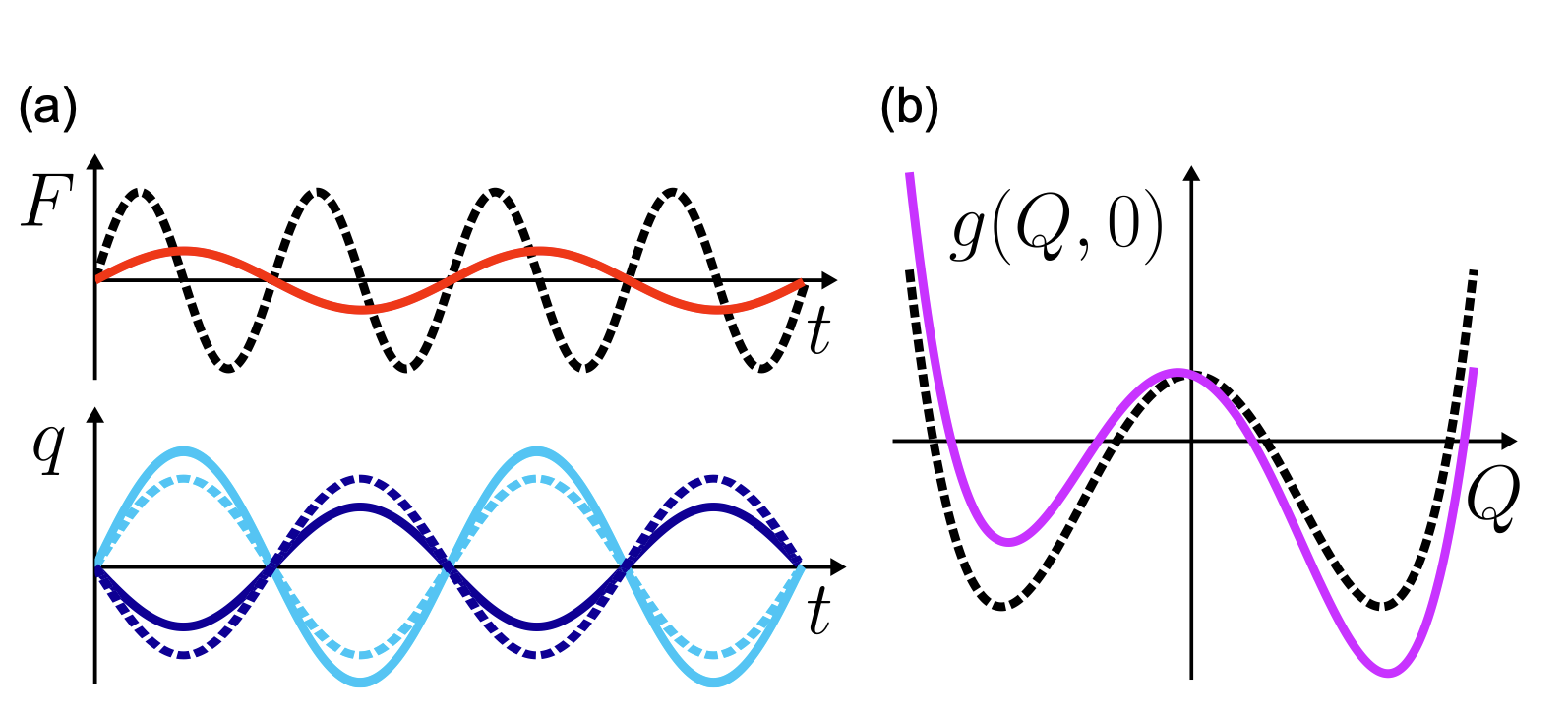
Resonant-force-induced symmetry breaking in a quantum parametric oscillator
A parametrically modulated oscillator has two opposite-phase vibrational states at half the modulation frequency. An extra force at the vibration frequency breaks the symmetry of the states. The effect can be extremely strong due to the interplay between the force and the quantum fluctuations resulting from the coupling of the oscillator to a thermal bath. The force changes the rates of the fluctuation-induced walk over the quantum states of the oscillator. If the number of the states is large, then the effect accumulates to an exponentially large factor in the rate of switching between the vibrational states. We find the factor and analyze it in the limiting cases, including the prebifurcation regime where the system is close but not too close to the bifurcation point.
D. K. J. Boneß, W. Belzig and M. I. Dykman
Phys. Rev. Res. 6, 033240 (2024)
